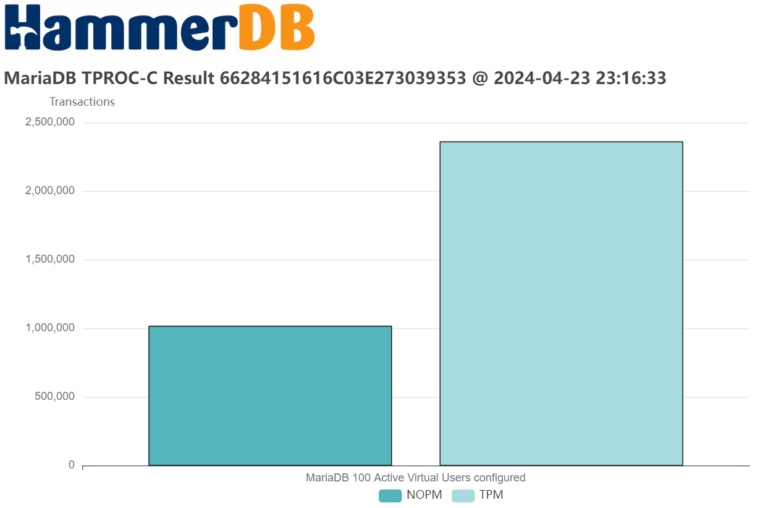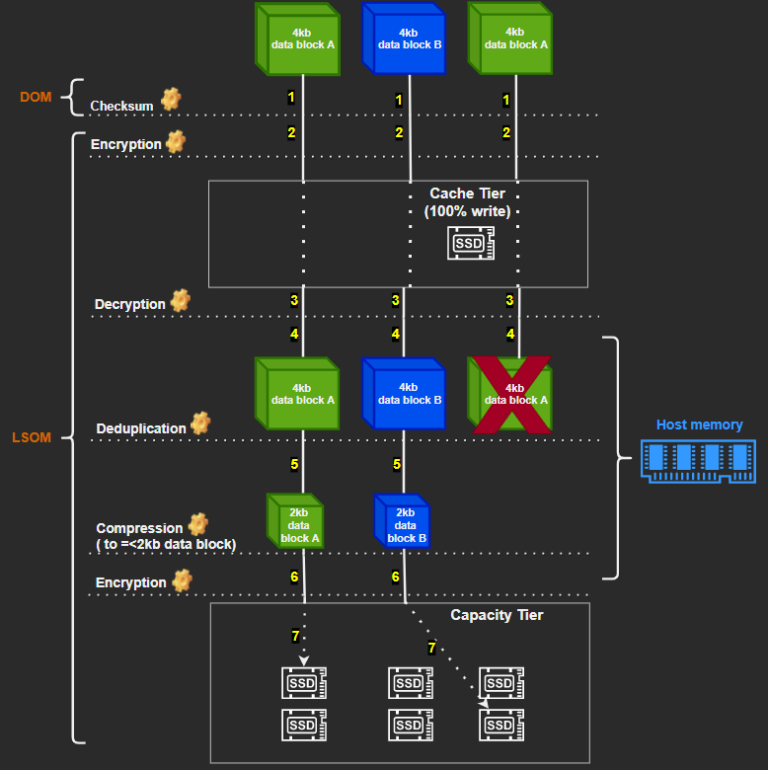Are you curious about database management and its importance in today’s digital world?
We will explore the different types of databases, such as relational, NoSQL, and object-oriented databases.
Discuss the basic concepts of database management, including data modeling, storage, retrieval, and manipulation.
We guide you through the steps to create and manage a database, along with best practices for maintaining data security.
Discover how you can learn database management through online tutorials, books, and hands-on projects.
Key Takeaways:
- Database management is essential for organizing and managing large amounts of data efficiently and effectively.
- There are different types of databases, including relational, NoSQL, and object-oriented, each with its own strengths and purposes.
- Learning database management requires a combination of theory and hands-on practice, utilizing online tutorials, courses, and other resources.
What Is Database Management?
Database Management involves the organization, storage, retrieval, and manipulation of data within an information system or software.
It plays a crucial role in ensuring that data is accurately stored, efficiently accessed, and effectively utilized. Data organization involves structuring information in a coherent manner to facilitate easy storage and retrieval. Storage methods range from traditional relational databases to newer NoSQL databases that handle unstructured data more efficiently. Retrieval processes allow users to access specific data quickly by running queries against the stored information.
Data manipulation techniques, including querying, updating, and deleting data, are essential for maintaining data integrity and relevance. Different database management systems (DBMS) offer varying capabilities and functionalities to address the diverse needs of organizations across industries.
Why Is Database Management Important?
Effective Database Management is crucial for ensuring the integrity, security, and accessibility of data within systems such as MySQL, Oracle, and SQL Server.
Proper database management ensures that valuable information remains consistent and accurate, preventing issues such as data corruption or loss.
Along with maintaining data integrity, robust security protocols play a vital role in safeguarding sensitive information against unauthorized access or cyber threats.
Efficient database management practices contribute to enhancing the data accessibility for users, allowing for quicker retrieval and utilization of stored data.
Whether it’s optimizing queries for performance in MySQL, securing data with encryption in Oracle, or implementing access controls in SQL Server, the roles of a database administrator are multifaceted in preserving data reliability and system functionality.
What Are the Different Types of Databases?
Databases can be categorized into various types, including Relational Databases like MySQL and Oracle, NoSQL Databases such as MongoDB, and Object-Oriented Databases.
Relational databases utilize tables to store data in structured formats, making them ideal for applications requiring strict data integrity.
On the other hand, NoSQL databases like MongoDB offer flexibility in handling unstructured data and scalability for modern applications.
Object-oriented databases store data as objects with attributes and methods, which align well with object-oriented programming paradigms.
Relational Databases
Relational databases like MySQL, Oracle, and SQL Server store data in structured tables with predefined relationships between entities.
One key feature of relational databases is their ability to enforce the relationships between tables, ensuring data integrity and consistency.
These databases use SQL (Structured Query Language) for querying and manipulating data, allowing users to retrieve specific information based on defined criteria.
The storage structure of a relational database organizes data into rows and columns, making it easier to manage and access information efficiently.
Relational databases support ACID properties (Atomicity, Consistency, Isolation, Durability), ensuring transactions are processed reliably and securely.
NoSQL Databases
NoSQL databases such as MongoDB, DB2, and Redis offer a flexible schema design and horizontal scalability for handling large volumes of unstructured data.
One of the key advantages of NoSQL databases is their ability to adapt to evolving data requirements without the rigidity of traditional relational databases. This flexibility allows organizations to store and retrieve data without a predefined structure, making them ideal for managing diverse data types such as documents, graphs, key-value pairs, and more.
Along with schema flexibility, NoSQL databases excel in terms of scalability, enabling seamless expansion to accommodate growing data sets and high transaction loads. This horizontal scalability is crucial for organizations dealing with dynamic data growth and fluctuating workloads.
The distributed nature of NoSQL databases enhances fault tolerance and high availability, reducing the risk of data loss and ensuring continuous access to information. This decentralized architecture makes them well-suited for cloud-based applications and environments.
Object-Oriented Databases
Object-Oriented Databases utilize object-oriented programming concepts to store and manage data efficiently, making them ideal for applications developed in languages like C++ that use complex data structures.
This design approach allows data to be encapsulated within objects, enabling easier data manipulation and offering a high degree of organization. Object-oriented databases excel in representing real-world entities as objects, fostering better data modeling and relationships.
Their compatibility with programming languages like C++ provides a seamless integration between the application’s data and logic layers. By leveraging classes, inheritance, and polymorphism, object-oriented databases offer a robust framework for handling intricate data structures and promoting scalability.
What Are the Basic Concepts of Database Management?
The basic concepts of database management include data modeling, storage mechanisms, retrieval processes, and data manipulation techniques.
When designing a database system, data modeling plays a crucial role in outlining the structure and relationships within the data. This involves identifying entities, attributes, and the connections between them to create an efficient database design. Various data modeling methodologies such as Entity-Relationship (ER) modeling and Unified Modeling Language (UML) are commonly used for this purpose.
Storage mechanisms determine how data is stored physically on disk or in memory, considering factors like performance, scalability, and data redundancy.
Retrieval processes involve fetching specific data from the database using SQL queries or other retrieval mechanisms.
Data manipulation techniques encompass actions like inserting, updating, deleting, and querying data to maintain the integrity and consistency of the database.”
Data Modeling
Data modeling involves designing the structure and relationships of data entities within a database, utilizing concepts from relational database systems like MySQL, Oracle, and SQL Server.
One of the key aspects of data modeling is understanding entity relationships. Entities represent real-world objects or concepts like employees, products, or transactions. By defining how these entities relate to each other through attributes and associations, data modelers create a clear picture of the database structure.
Normalization techniques play a crucial role in data modeling by reducing redundancy and minimizing inconsistencies. This process involves breaking down data into smaller, manageable units to ensure data integrity and optimize database performance.
Schema design principles dictate the organization and layout of tables, columns, and relationships within a database. Design choices such as primary keys, foreign keys, and indexes are critical for efficient data retrieval and manipulation.
Data Storage
Data storage encompasses the methods and technologies used to persist data, with solutions ranging from document-based databases like MongoDB to key-value stores like Oracle NoSQL, often utilizing efficient data structures.
In document-oriented databases such as MongoDB, data is stored in flexible, JSON-like documents, enabling complex data hierarchies and relationships. On the other hand, key-value stores like Redis focus on simplicity, where each piece of data is stored as a key-value pair, enabling quick retrieval and fast operations.
When optimizing data structures, considerations like indexing, caching, and sharding play a crucial role in enhancing performance and scalability, ensuring efficient data retrieval and storage.
Data Retrieval
Data retrieval involves fetching and presenting stored information using query languages like SQL in database systems such as SQL Server, often requiring efficient algorithmic processing.
When retrieving data, the query language acts as a bridge between the user and the database, enabling seamless communication and efficient extraction based on specific criteria. Query optimization plays a crucial role in enhancing retrieval speed by fine-tuning the query logic, indexes, and joins to minimize execution time and resource usage.
In the realm of algorithmic efficiency, factors like data structure, indexing methods, and query execution plans significantly influence the speed and accuracy of data retrieval. Leveraging appropriate algorithms and techniques can greatly improve the overall performance of database queries.
Data Manipulation
Data manipulation involves modifying stored data through operations like insertion, deletion, and updating, often implemented using programming languages like C++ or tools provided by database management systems like those from Oracle Corporation.
In terms of insertion, new data records are added to the existing database tables, expanding the dataset. Deletion, on the other hand, involves removing unwanted data entries from the database, ensuring data integrity and efficiency.
Updating allows the modification of existing data, enabling the database to reflect the most recent information. Programming languages like C++ offer robust libraries and frameworks to integrate database operations seamlessly.
Database management systems, such as Oracle’s, provide specialized tools like SQL for executing these data manipulation tasks efficiently, ensuring streamlined data processing and retrieval for optimal database performance.
What Are the Steps to Create and Manage a Database?
The creation and management of a database involve several key steps, starting from identifying the purpose and scope of the database project to testing and refining the database structure.
Once the project scope is defined, the next crucial phase is to select an appropriate database design methodology. Common methodologies include the relational model, object-oriented model, and NoSQL approach, each catering to specific project requirements. The chosen methodology will influence how data is organized, stored, and accessed within the database system.
Following the design phase, database implementation comes into play. This stage involves converting the logical database design into a physical database schema, setting up tables, relationships, and keys.
Identify the Purpose and Scope of the Database
The initial step in creating a database is to identify the intended purpose and scope of the database, ensuring alignment with the project objectives and educational requirements.
Defining the purpose and scope sets the foundation for the entire project, guiding decisions on data structure, user access, and system functionalities. Clear objectives facilitate effective communication between stakeholders, enabling a focused approach towards meeting project goals. It is crucial to outline the functional requirements early on, detailing essential data elements, relationships, and constraints.
Factoring in educational considerations ensures that the database design accommodates user knowledge levels, training requirements, and support mechanisms. Educating users about the system’s capabilities and limitations enhances usability and overall project success.
Design the Database Structure
Database design involves structuring data elements, relationships, and constraints to create an efficient and normalized database structure, often leveraging data structures to optimize performance.
One of the initial steps in database design is entity relationship modeling, which helps visualize the database schema by identifying entities, attributes, and relationships between them. This process is crucial for understanding how data should be organized and interconnected within the database.
- Subsequently, normalization techniques are applied to ensure data integrity and reduce redundancy by organizing data into well-structured tables that adhere to specific rules, such as eliminating partial dependencies and minimizing update anomalies.
- Structural optimizations focus on enhancing database performance by fine-tuning indexes, partitions, and storage configurations to efficiently retrieve and manipulate data, thereby improving overall system responsiveness.
Create and Populate the Database
Creating a database involves implementing the designed structure and populating it with initial data, often utilizing SQL commands in database management systems like SQL Server.
When creating a database, the first step is to define the schema, which outlines the tables, columns, relationships, and constraints that will govern the data storage. This schema serves as the blueprint for the database structure, ensuring organized and efficient data management.
- Next, data population procedures are executed to input initial values into the database tables. This step involves inserting records, updating existing data, or deleting unnecessary information to establish a functional dataset.
- SQL queries play a crucial role in both schema implementation and data population. For schema creation, commands like CREATE TABLE, ALTER TABLE, and CONSTRAINT are utilized to set up the framework.
- When populating data, INSERT INTO and UPDATE statements are commonly used to add or modify records, while SELECT queries help retrieve specific information for analysis or display.
Test and Refine the Database
Testing and refining a database involves verifying data integrity, performance benchmarks, and system reliability, often employing algorithms and query optimizations in database systems like MySQL.
One crucial aspect of database testing is data validation, which ensures that the data entered into the database meets specified criteria, preventing errors and maintaining accuracy. This process involves checking data types, lengths, formats, and constraints to ensure consistency across the database.
Additionally, query optimization techniques are implemented to fine-tune the performance of database queries, reducing response times and enhancing overall efficiency. Performance tuning methods, such as indexing, caching, and partitioning, play a vital role in enhancing the database’s speed and responsiveness.
What Are the Best Practices for Database Management?
Implementing best practices in database management is critical, including regular backups, robust data security measures, and consistent maintenance and updates to ensure system stability.
Backup strategies play a fundamental role in safeguarding against data loss in database management. It is recommended to automate regular backups to prevent any potential disruptions. Utilizing a combination of full, incremental, and differential backups can provide a comprehensive protection plan.
In terms of security protocols, strong encryption methods, regular vulnerability assessments, and access controls are essential to thwart unauthorized access and mitigate risks. Maintenance routines should involve periodic performance tuning, index optimization, and software patches to keep the database running efficiently.
Regular Backups
Regular backups are essential to safeguard database integrity and facilitate data recovery in case of system failures, with tools like PostgreSQL and services from Google LLC providing robust backup solutions.
Having a solid backup strategy ensures that your organization can quickly restore critical data and resume normal operations after a disruptive event.
It is advisable to implement a backup rotation schedule to maintain multiple versions of backups over time, helping to combat data corruption and potential cyber threats.
Establishing a well-defined retention policy allows you to balance storage costs with data availability requirements, ensuring that you retain essential information without unnecessary clutter.
Data Security Measures
Data security measures such as encryption, access controls, and audit trails are crucial for protecting sensitive information within databases, with solutions from Oracle and experts like Saqib Masood ensuring comprehensive security.
Encryption techniques play a vital role in safeguarding data from unauthorized access by converting the information into an unreadable format that can only be decrypted with the appropriate key.
Access control policies further enhance security by defining who can view or modify specific data within the database. These policies ensure that only authorized users can access sensitive information, reducing the risk of data breaches.
Security audits are essential for regularly evaluating the effectiveness of security measures in place and identifying any vulnerabilities that need to be addressed.
Regular Maintenance and Updates
Regular maintenance and updates are essential to optimize database performance, address vulnerabilities, and ensure compatibility with evolving software environments, with tools like SQL Server and services from Apple supporting seamless maintenance procedures.
Effective database maintenance involves crucial tasks such as performance optimization,
- patch management,
and version upgrades. Regular performance tuning, data backup verification, and periodic system checks are integral elements of database maintenance.
- Ensuring the timely installation of software updates and patches is vital to mitigate security risks and maintain system stability.
Version upgrades not only provide enhanced features and capabilities but also help to address compatibility issues with new software releases. By embracing a proactive approach to maintenance, organizations can safeguard their databases against potential threats and
ensure consistent performance.
Proper Documentation
Comprehensive documentation of database structures, schemas, and processes is essential for facilitating system understanding, troubleshooting, and knowledge transfer, with platforms like MySQL and Apple’s iOS ecosystem offering robust documentation tools.
Proper documentation ensures that all stakeholders have access to essential information regarding the database setup, configurations, and relationships between different data entities.
Schema descriptions play a crucial role in detailing the structure of the database, defining tables, fields, and key relationships. By documenting query references, developers can easily retrieve information on how different operations are carried out within the database system.
Operational guidelines provide instructions on maintaining and optimizing database performance, contributing to the system’s overall efficiency.
How Can I Learn Database Management?
Acquiring knowledge in database management can be achieved through various avenues, including online tutorials, structured courses, hands-on projects, and educational resources.
Online tutorials offer the convenience of self-paced learning, allowing individuals to delve into topics like data modeling, query language, and database design at their own pace. These tutorials often provide interactive exercises and quizzes to reinforce understanding.
Structured courses, on the other hand, offer a more comprehensive approach, covering topics like SQL, database administration, and data warehousing in a structured curriculum designed by industry experts.
Hands-on projects enable learners to apply theoretical knowledge to real-world scenarios, creating databases, optimizing queries, and troubleshooting common issues.
Educational resources such as textbooks, research papers, and online forums provide supplementary material for deeper exploration of advanced topics in database management.
Online Tutorials and Courses
Online tutorials and courses offer convenient ways to learn database management concepts, with platforms like MongoDB providing specialized courses on data structures and database operations.
These online resources help individuals grasp the fundamental principles of database management effortlessly, whether they are beginners or experienced professionals looking to enhance their skills.
With structured courses, learners can delve deeper into essential topics such as relational databases, query optimization, and data modeling, gaining practical insights that are directly applicable to real-world scenarios.
The interactive nature of online tutorials, coupled with hands-on exercises and case studies, makes the learning process not only informative but also engaging and enjoyable.
Books and Resources
Books and resources serve as valuable assets for expanding knowledge in database management, with publications covering programming languages like C++ and databases such as SQLite.
By utilizing textbooks like ‘Database Management Systems’ by Raghu Ramakrishnan and Johannes Gehrke, learners can grasp fundamental concepts imbued with practical examples. Online platforms like W3Schools offer interactive tutorials on SQL, essential for database query building. Referencing language-specific resources like ‘C++ Primer’ by Stanley B. Lippman supports understanding the technical aspects crucial for database development.
Exploring specialized databases through works such as ‘Data Science for Business’ by Foster Provost and Tom Fawcett broadens insights into real-world applications. Diverse materials like ‘The SQL Programming Language’ by Dan Gabbard help enhance SQL proficiency, vital in relational database management.
Hands-on Practice and Projects
Engaging in hands-on practice and project work is essential for honing database management skills, with opportunities to implement algorithms and solutions within databases, supported by platforms like Google LLC.
Real-world application is crucial for understanding database management, as it provides a tangible context for learning about data modeling and database design.
- Algorithm implementation in projects not only reinforces theoretical knowledge but also enhances problem-solving abilities specific to database optimization and query efficiency.
- Through project-based learning, one can gain experience in developing database systems that cater to unique organizational needs, giving a practical insight into how to handle data storage, retrieval, and manipulation effectively.
Such experiential learning prepares individuals to tackle challenges in database administration and implementation with confidence and competence.
Frequently Asked Questions
What is a database management tutorial?
A database management tutorial is a step-by-step guide that teaches individuals how to manage databases, including creating, updating, and querying data.
Why are database management tutorials important?
Database management tutorials are important because they provide individuals with the necessary knowledge and skills to effectively manage and handle databases, which are crucial for businesses and organizations.
What topics are usually covered in database management tutorials?
Topics typically covered in database management tutorials include database design, data modeling, data manipulation, database security, and database optimization.
Are there different types of database management tutorials?
Yes, there are different types of database management tutorials, such as introductory tutorials for beginners, advanced tutorials for experienced individuals, and specialized tutorials for specific database management systems.
Do I need any prior knowledge or experience to follow a database management tutorial?
While some basic computer skills may be helpful, most database management tutorials are designed for beginners and do not require any prior knowledge or experience in database management.
Are there any free database management tutorials available online?
Yes, there are many free database management tutorials available online, including video tutorials, written tutorials, and interactive tutorials. These can be found on various websites, blogs, and YouTube channels.




